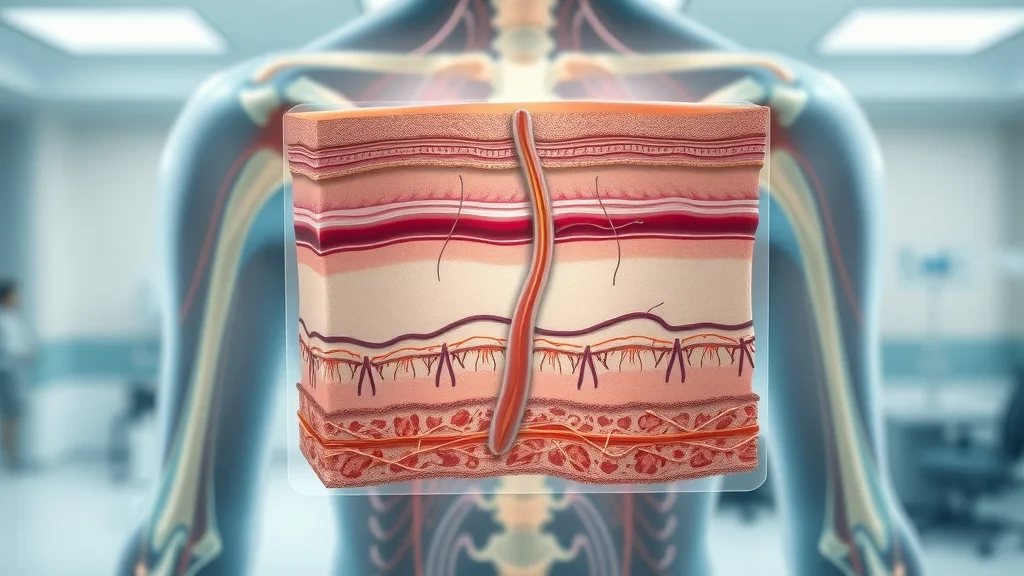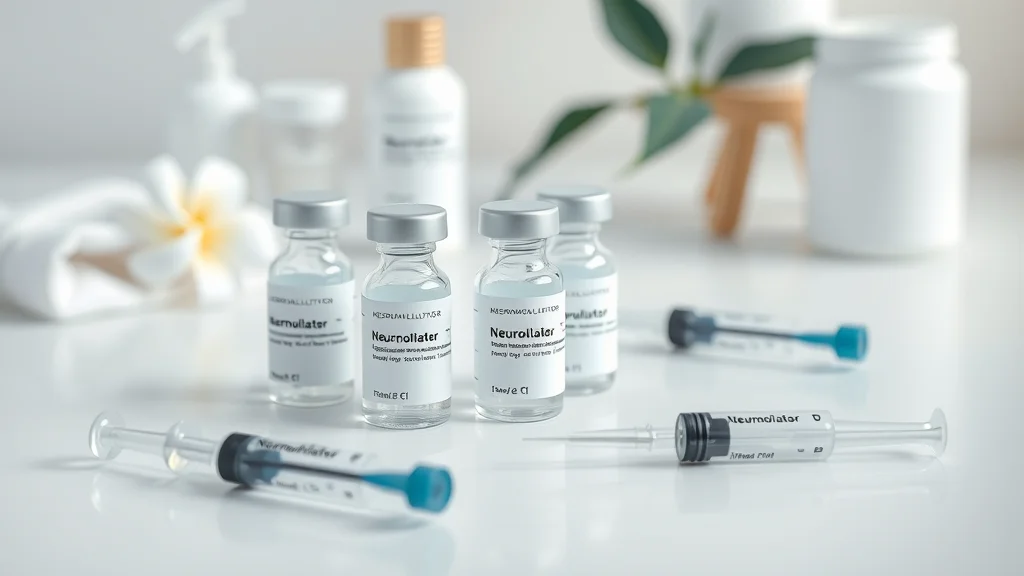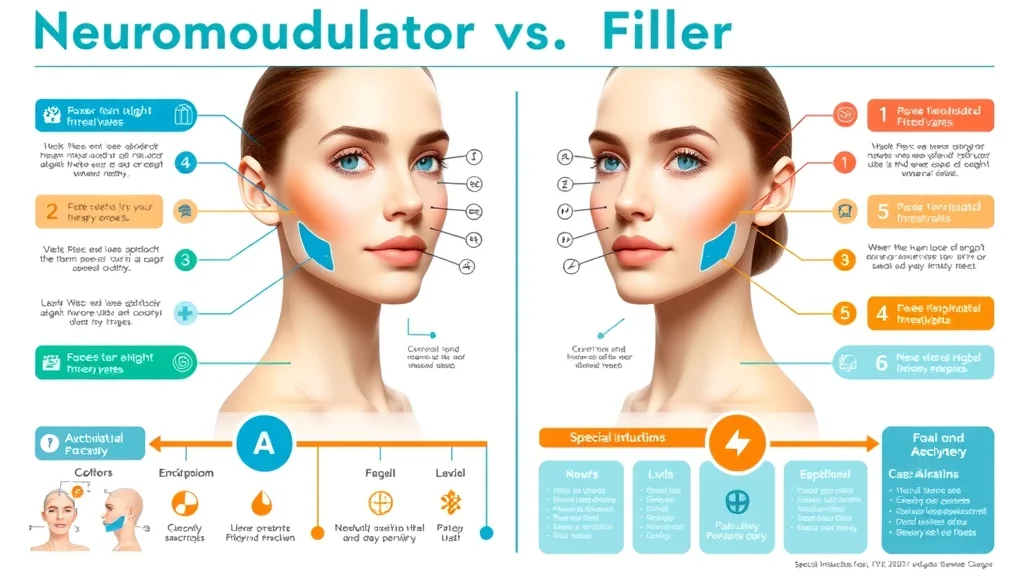Did you know that in the United States alone, neuromodulator treatments surpass ten million procedures annually—yet 70% of those seeking youthful rejuvenation can’t name a single alternative to Botox? Here’s the truth: The real breakthrough in beauty and longevity isn’t just about smoothing wrinkles; it’s about tuning the hidden symphony within your nervous system. Welcome to the era where science, sophistication, and self-care unite—because aging beautifully begins deep in your cells, not just your skin.
Neuromodulators: The Unsung Symphony Conductors of Beauty and Longevity
“The secret to ageless beauty isn’t in your serum — it’s in your cells.”
Defining Neuromodulators: How the Nervous System Influences Aesthetic Outcomes
Imagine your nervous system as a grand orchestra, where the brain is the conductor and every nerve, from the spine to the tiniest facial muscle, is an instrument. Neuromodulators are like the subtle cues and shifts in tempo that refine the symphony—except here, they shift the tone of your cells. Medically, neuromodulators are substances—both natural (like biogenic amines) and synthetic—that alter the way neurons communicate in the central nervous system. Famous for their role in medical aesthetics, the most notable member is Botox, but the landscape is rapidly expanding with innovative options.
So why do neuromodulators matter for health and appearance? By modulating neurotransmitter release at the neuromuscular junction or within central neural circuits, these agents can reduce expression lines, manage chronic pain, or even support nervous system well-being. This goes beyond skin deep: with advances in synaptic dynamics and new delivery systems, we’re now seeing neuromodulators influencing everything from spinal cord function to the role of glial cells in anti-aging therapies. As Dr. Julian Hayes explains, “We’re entering an era where a sophisticated approach to synaptic efficacy shapes not just how you look, but how you age, move, and feel.”

Introduction to neuromodulators and their role in the nervous system
Why neuromodulators matter for both health and appearance
Expert insight: Dr. Julian Hayes explains the new science of synaptic dynamics
What You’ll Learn in This Neuromodulators Feature
A clear understanding of what neuromodulators are — beyond Botox
The latest research on synaptic dynamics and anti-aging
How to pair neuromodulator therapy with lifestyle science for maximal impact
Expert quotes and evidence-based strategies
FAQs on modern neuromodulator treatments

Breaking Down Neuromodulators: Nervous System and Synaptic Dynamics Demystified
To truly appreciate the impact of neuromodulators, let’s break down their science. Within every neural circuit, synapses are the crucial junctions where nerve signals jump from one neuron to another. Neuromodulators—working through protein coupled receptors, nicotinic receptors, adrenergic receptors, or muscarinic receptors—tune the strength and timing of these neural connections, boosting or diminishing the signal. Popular in both cosmetic and medical fields, agents like Botox (onabotulinumtoxinA), Dysport, and Xeomin all adjust the release of neurotransmitters, thereby relaxing targeted muscles, minimizing dynamic wrinkles, and even attenuating chronic pain signals.
But the effects of neuromodulators reach further. They influence synaptic dynamics—an area of intense research where scientists unravel how small changes in neurotransmitter release and ion channels affect not just aesthetics but spinal cord function, mood, and energy. Recent reviews on official websites dedicated to neuroscience emphasize how modulation of intrinsic excitability within motor neurons and glial cells can have powerful, lasting effects. The future? Precision, personalization, and a new wave of next-gen neuromodulators tailored to your unique physiology.
Comparison of Neuromodulators Used in Medical Aesthetics | ||||
Neuromodulator |
Mechanism |
Duration |
Indications |
Unique Benefits |
|---|---|---|---|---|
Botox (OnabotulinumtoxinA) |
Blocks acetylcholine at neuromuscular junction |
3–4 months |
Wrinkles, migraines, hyperhidrosis |
Classic, FDA-approved, extensive safety data |
Dysport (AbobotulinumtoxinA) |
Similar to Botox—faster diffusion, gentler onset |
3–4 months |
Glabellar lines, certain muscle disorders |
Wider spread, faster onset for some patients |
Xeomin (IncobotulinumtoxinA) |
Pure-form, no complex proteins |
3–4 months |
Frown lines, cervical dystonia |
Lower risk of antibody resistance |
DaxibotulinumtoxinA (Daxxify) |
Peptide-stabilized, modulates synaptic efficacy |
6+ months |
Glabellar lines |
Extended duration, innovative delivery |
PrabotulinumtoxinA (Jeuveau) |
Similar to Botox, modern formulation |
3–4 months |
Forehead and frown lines |
Tailored for cosmetic outcomes |
The Science: From Synaptic Dynamics to Visible Results
“Every dose of a neuromodulator is a note in the grand composition of the nervous system's symphony.” — Dr. Miranda Chen, Dermatologist
At the heart of neuromodulator efficacy lies the art of synaptic dynamics. When these agents interact with motor neurons and the complex network of ion channels and neural circuits, they selectively dampen overactive muscles or pathologic triggers. This does not just smooth wrinkles; it can support chronic pain relief, movement disorders, and even balance autonomic nervous system activity. Biogenic amines like dopamine or serotonin, and traditional agents like acetylcholine, play distinct roles in modulating neurotransmitter release across synapses and junctions.
Today’s research leverages sophisticated in-vivo models and human trials—often outlined on peer-reviewed gov websites—to explore how changes in synaptic plasticity, glial cell activity, and channel protein expression account for both the cosmetic and therapeutic effects of neuromodulators. This rapidly growing science has given rise to new strategies: targeting specific coupled receptors, customizing dosing regimens, and integrating neuromodulators into multi-level wellness protocols that support the whole nervous system and rejuvenation from within.

Beyond Botox: Exploring New Generations of Neuromodulators
Next-gen neuromodulators: what’s changing?
Clinical data on efficacy, onset, and safety
Comparing neuromodulators in the context of the nervous system
So, what’s next in the world of neuromodulators? As new generations emerge, we’re seeing formulations like DaxibotulinumtoxinA and PrabotulinumtoxinA that extend efficacy, hasten onset, and reduce the risk of antibody resistance. These advanced molecules interact with synaptic proteins and coupled receptors in ways that go beyond the classic neuromuscular junction—offering refined control of muscle tone, smoother transitions, and higher patient satisfaction. Clinical trials and regulatory data on official websites confirm robust safety profiles, reduced incidence of side effects, and longer treatment intervals.
But the true revolution is integrative: modern practitioners look at a patient’s central nervous system, the number of neurons impacted, even ion channel variability, to select and combine therapies. Innovations in delivery—like transdermal nanocarriers, sustained-release injectables, or bioidentical formulations—enable precise modulation of neural circuits and biofeedback pathways. In short, the nervous system is now the canvas, and neuromodulators are the artist's brush—far surpassing Botox as a one-size-fits-all solution.

Real-World Application: Innovative Neuromodulator Therapies in Med Spas
Integrative protocols: Pairing neuromodulators with skin, body, and longevity treatments
Biohacking meets aesthetic medicine — the EternaWell model
Forward-thinking med spas blend neuromodulator injections with comprehensive wellness plans. Integrative protocols might pair neuromodulators with microneedling, infrared light therapy, peptide supplementation, and targeted skincare to optimize both the health of your skin and the resilience of your nervous system. For example, the EternaWell approach leverages data-driven insights to combine DaxibotulinumtoxinA for extended wrinkle reduction with NAD+ infusions and sleep optimization to maximize cellular repair.
This biohacking-meets-aesthetic paradigm ensures that clients achieve longer-lasting, more radiant results. By looking beyond the surface, medical professionals can enhance synaptic efficacy, support healthy glial cells, and reduce the physiological processes driving visible aging. The outcome? Smoother skin, better mood, and a nervous system tuned for both beauty and well-being.

Expert Perspectives: Neuromodulators in Aesthetic and Wellness Science
Mini Interview Panel: Top Questions with Aesthetic Medicine Experts
How have neuromodulators evolved in recent years?
Best practices for combining neuromodulators with wellness interventions
To capture the pulse of this rapidly changing field, we spoke with a panel of experts in dermatology, longevity, and regenerative aesthetics. Q: How have neuromodulators evolved? Dr. Lena Sorenson: “Neuromodulators are the bridge between lifestyle science and regenerative aesthetics. We now utilize these agents not just for softening expression lines but to subtly adjust neural circuits that impact pain, mood, and movement. Precision formulation and integrative assessments—considering factors like central nervous system health—are the new standard in high-end med spas.” Q: What are the best practices for combining neuromodulators with wellness? Dr. Julian Hayes: “Longevity depends on orchestrating everything from rest and nutrition to stress management and targeted medical interventions. We layer neuromodulators with lifestyle modifications—like optimizing sleep and supplementing with biogenic amines or co-factors—to maintain results, reduce adverse effects, and promote total well-being.”
“Neuromodulators are the bridge between lifestyle science and regenerative aesthetics.” — Dr. Lena Sorenson, Longevity Specialist

People Also Ask: Demystifying Neuromodulators
What are examples of neuromodulators?
Examples of neuromodulators include substances that regulate neuronal activity, such as Botox (onabotulinumtoxinA), Dysport, DaxibotulinumtoxinA, and Xeomin in medical aesthetics, as well as naturally occurring ones like dopamine, serotonin, and acetylcholine. Each influences neural circuits or synaptic dynamics in unique ways, either by affecting neurotransmitter release or modulating intrinsic excitability in the central nervous system. These agents are used to alter muscle tone, ease chronic pain, and manage various neurological or cosmetic indications.
What is a neuromodulator Botox?
Botox (onabotulinumtoxinA) is the most well-known neuromodulator, widely used to soften wrinkles by blocking acetylcholine release at the neuromuscular junction. This results in temporary relaxation of specific facial muscles, which can reduce dynamic lines and improve appearance. Botox is also employed in addressing conditions affecting the spinal cord, such as muscle spasticity and chronic migraines. Its action exemplifies how manipulating neural signaling at the cellular level can deliver both aesthetic and therapeutic results.
What drugs are neuromodulators?
In the context of medicine and aesthetics, neuromodulator drugs include Botox, Dysport, Xeomin, DaxibotulinumtoxinA, and PrabotulinumtoxinA (Jeuveau). Outside cosmetics, substances affecting coupled receptors, such as certain antidepressants or medications targeting adrenergic and muscarinic receptors, also qualify. These drugs act at various points within neural circuits, influencing neural transmission, synaptic dynamics, and ion channels to manage conditions as diverse as chronic pain, movement disorders, and aging-related changes.
Which best describes a neuromodulator?
A neuromodulator is any substance that modifies how neurons communicate within the nervous system, typically by altering the efficiency of neurotransmitter release, receptor sensitivity, or intrinsic excitability of neurons. Unlike direct neurotransmitters—which serve as the primary “messengers”—neuromodulators fine-tune the entire orchestration, amplifying or dampening signals to produce long-lasting and widespread effects. This refined control is essential in both controlling facial musculature and supporting broader physiological processes in the central nervous system and beyond.

FAQs on Neuromodulators, the Nervous System, and Synaptic Dynamics
Are neuromodulators safe for long-term use?
Yes, when administered by qualified professionals and with appropriate monitoring, neuromodulators have an established track record of safety, backed by years of data on official and gov websites. Individualized protocols and regular assessments of nervous system health are crucial for minimizing risks and optimizing results.How do neuromodulators differ from traditional fillers?
Neuromodulators modify nerve signals to relax muscles or regulate glandular function, while fillers add physical volume to areas of tissue loss. Fillers typically target volume restoration using hyaluronic acid, whereas neuromodulators target synaptic dynamics for smoother, more natural movement and appearance.Can lifestyle changes impact neuromodulator effectiveness?
Absolutely. Optimizing sleep, nutrition, stress, and even exercise can enhance synaptic efficacy and the effects of neuromodulator treatments. Modern protocols often incorporate lifestyle science—like supplementation and mindfulness—for ageless, sustainable beauty.What future trends are shaping the field?
Trends include highly personalized neuromodulator formulas matched to your unique neural circuit composition, integration with regenerative therapies (like exosomes and peptides), and a shift toward preventative, whole-system care that supports beauty from the inside out.

Key Takeaways: Neuromodulators and the Future of Ageless Living
Neuromodulators are reshaping both aesthetic outcomes and wellness paradigms
Scientific advances in synaptic dynamics are expanding treatment horizons
Integrating neuromodulators with holistic therapies amplifies long-term results

Continue Your Journey: EternaWell Journal’s Perspective on Neuromodulators and Enduring Wellness
For those seeking not just beauty but lasting vitality, EternaWell Journal offers the latest wisdom, research, and actionable tips on integrating neuromodulators into a whole-life wellness routine.

Empower yourself with science, not just trends. Sustainable beauty is born from inner vitality—let your nervous system set the tone for ageless living.
 Add Row
Add Row  Add
Add 




Write A Comment